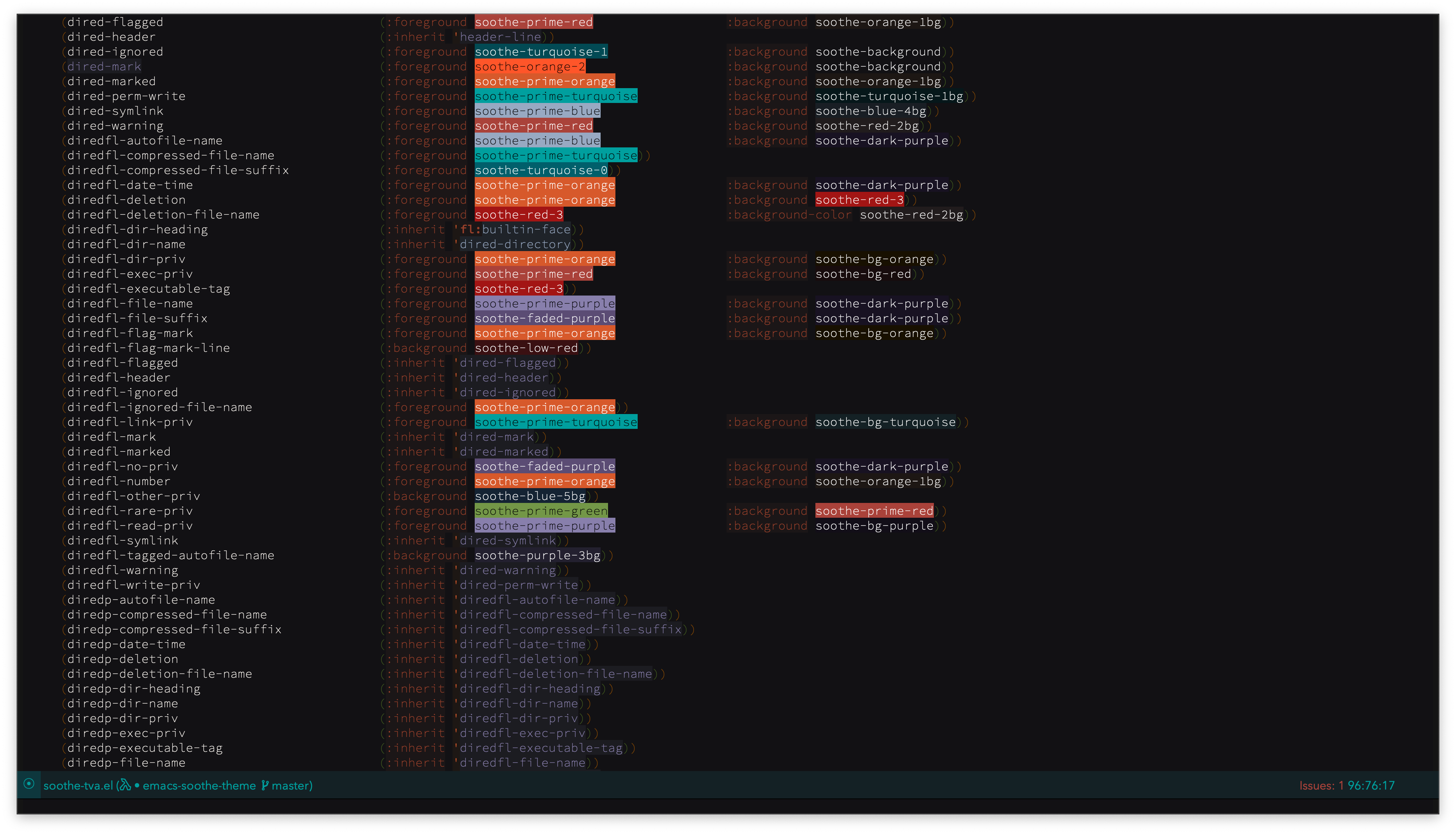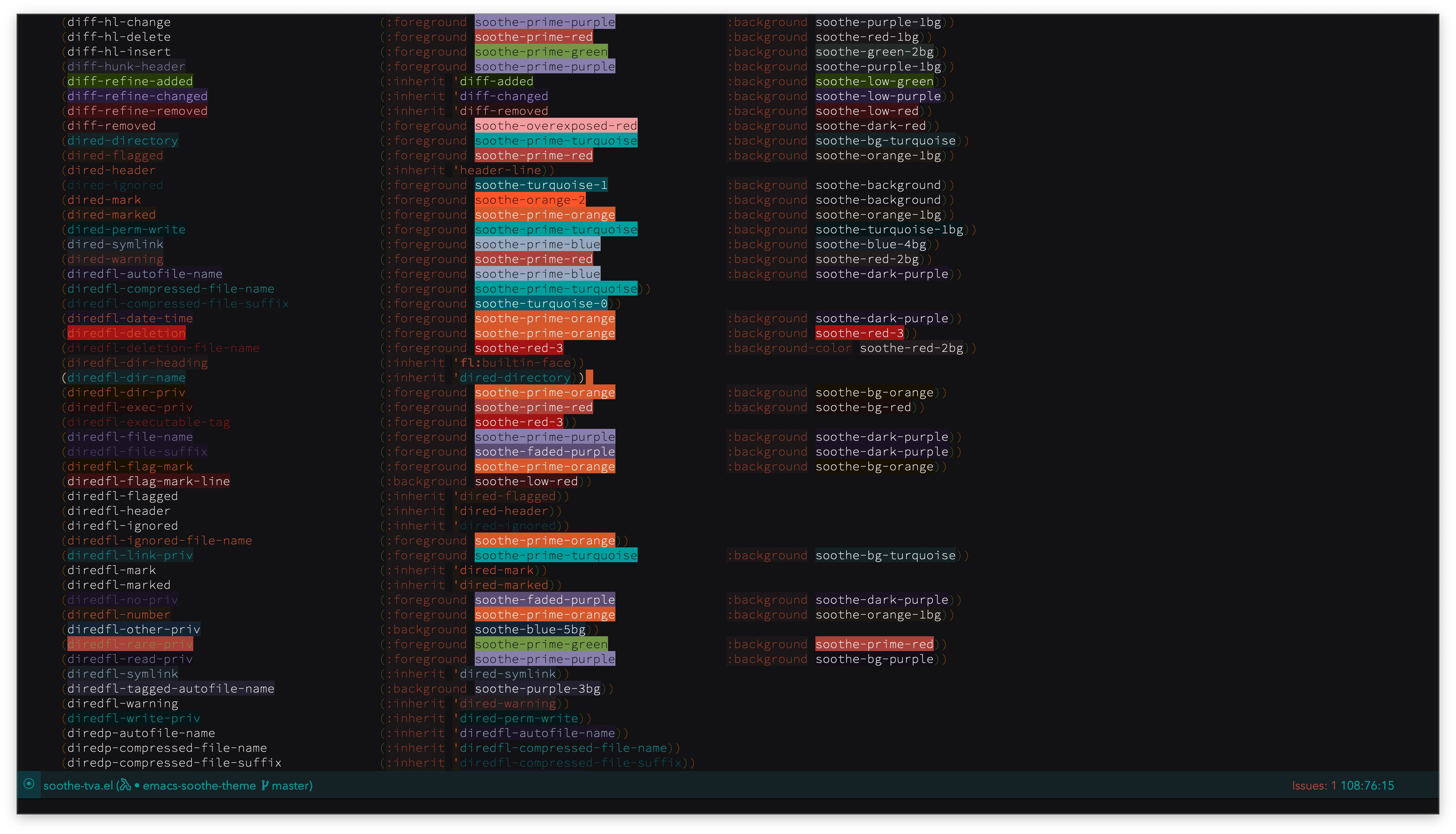branch: elpa/autothemer
commit 882fd8f7bbd9b63f1ee28f0fa047e9fc3998f014
Author: Jason Milkins <jason...@users.noreply.github.com>
Commit: jasonm23 <jason...@gmail.com>
Update README, bin/test & SVG swatch sort hue-sat
---
README.md | 58 ++++++++++++++++++++++++++++++++++++++++++++++++++--------
1 file changed, 50 insertions(+), 8 deletions(-)
diff --git a/README.md b/README.md
index c076bde065..7d7d22299e 100644
--- a/README.md
+++ b/README.md
@@ -1,12 +1,15 @@
# Autothemer
[](https://github.com/jasonm23/autothemer/actions/workflows/test.yml)
+
[](https://elpa.nongnu.org/nongnu/autothemer.html)
[](https://melpa.org/#/autothemer)
[](https://stable.melpa.org/#/autothemer)
Autothemer provides `autothemer-deftheme` a macro wrapper for `deftheme` and
-`custom-theme-set-faces` whicg creates a custom color theme.
+`custom-theme-set-faces` which creates a custom color theme.
+
+The package also includes some useful theme development features... read on.
## Overview
@@ -171,15 +174,18 @@ as `,my-red`, so that it's evaluated properly.
You can automatically generate specs for faces that are not in your
theme using the command
-`M-x autothemer-generate-templates`
+```
+M-x autothemer-generate-templates
+```
+There's an alternative command to use if you'd like to filter by regexp.
-This will create a new buffer with simplified specs for all unthemed
-faces. Colors will be selected from the theme palette based on the
-nearest RGB distance to the un-themed color.
+```
+M-x autothemer-generate-templates-filtered
+```
-We recommend thoroughly reviewing the auto generated themes so that
-you produce a high quality theme. Autothemer doesn't replace good
-judgement and taste!
+These commands will create a new buffer with simplified specs for all the
+unthemed faces (or the subset you filtered by). Colors will be selected from
the theme palette based on the
+nearest RGB distance to the un-themed color.
### Re-using the color palette
@@ -198,6 +204,42 @@ If you place the advice definition before the
autothemer-generated theme
is loaded, e.g. `my-red` from the example above will be available as a
variable that can be used in other parts of your emacs configuration.
+### Let palette
+
+Alternatively you can create a let-like block using the macro
`autothemer-let-palette`.
+You will need to load/eval the required autothemer theme source (not
byte-compiled), before
+executing it.
+
+The palette color values will autocomplete, and you can check the palette
+with `M-x macrostep-expand`(place the cursor to the left of the macro call.)
+
+
+
+### Colorize color-names from the palette
+
+Color names in the palette can be colorized, in any buffer.
+Make sure there's a current theme in `autothemer--current-theme` (eval your
autothemer based theme from source, not byte-code) and use:
+
+```
+M-x autothemer-colorize
+```
+For example, with [Soothe
Theme](https://github.com/emacsfodder/emacs-soothe-theme) viewing
`soothe-tva.el`:
+
+
+
+For even more feedback, install and use the excellet
[Fontify-Face](https://github.com/Fuco1/fontify-face) so you
+can see the current face definitions too.
+
+
+
+In these images `rainbow-mode` is also swiched on, so we can see hex colors
and system palette names colorized.
+
+```
+M-x rainbow-mode
+```
+
+To edit colors interatively
[Kurecolor](https://github.com/emacsfodder/kurecolor) will serve you well.
+
### Select colors from the palette
Since version 0.2.8 it is possible to select a color from the palette (using
the `completing-read` style.)
